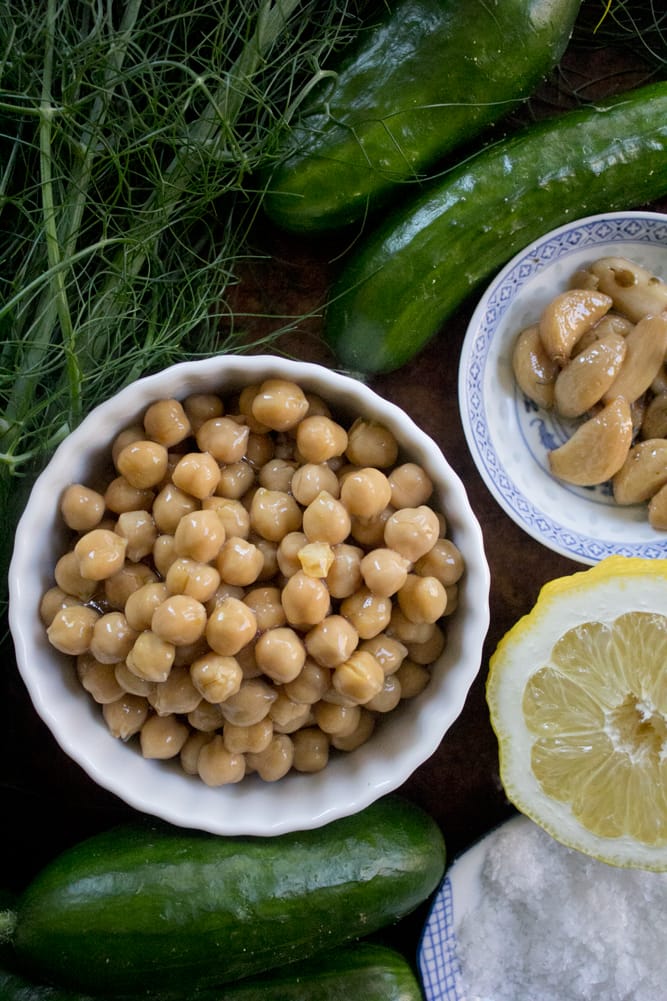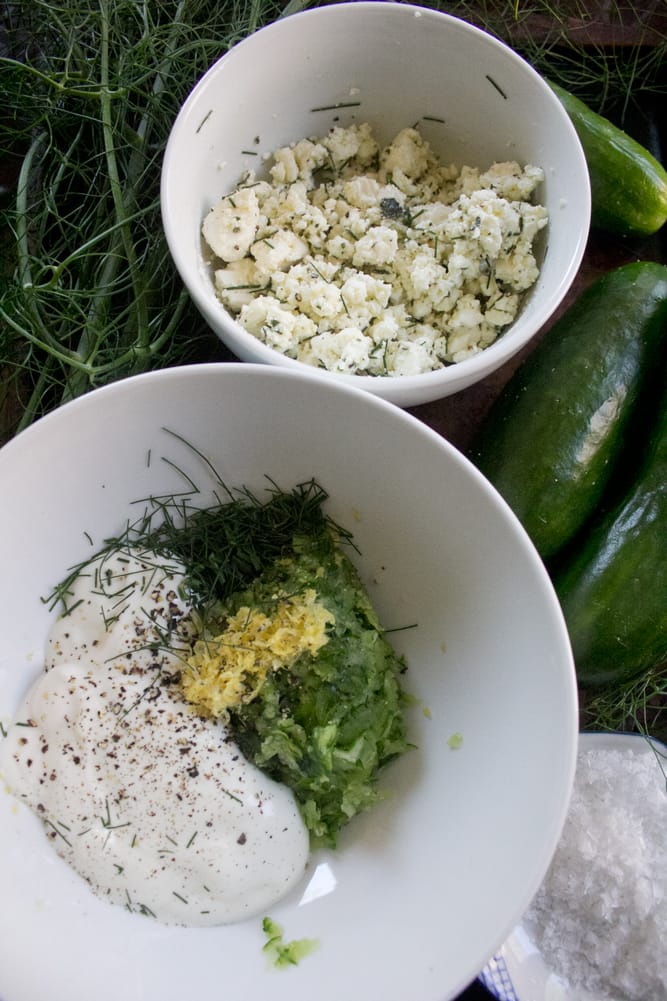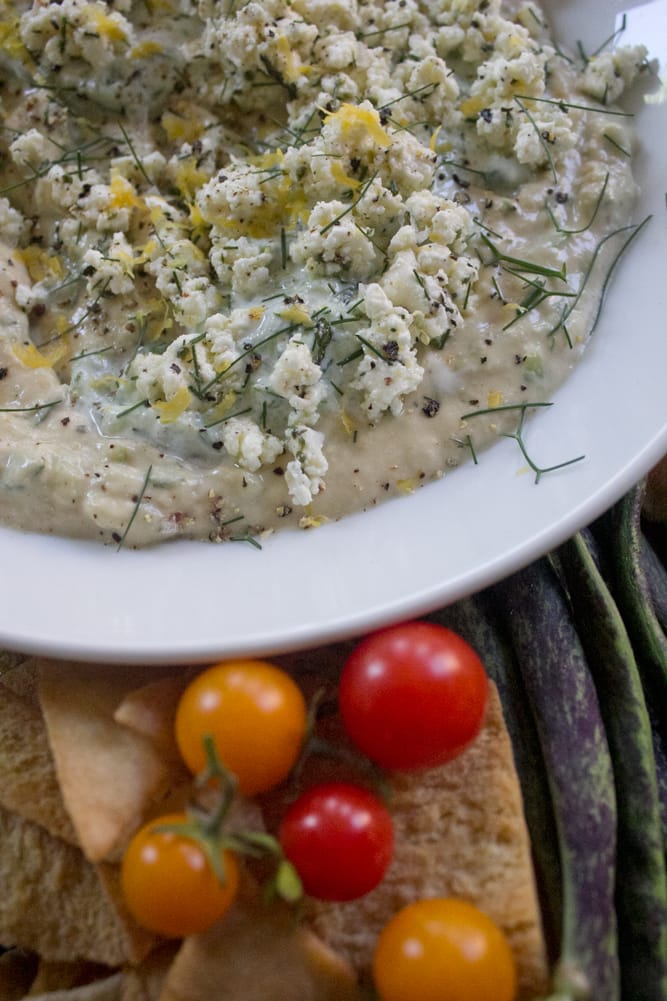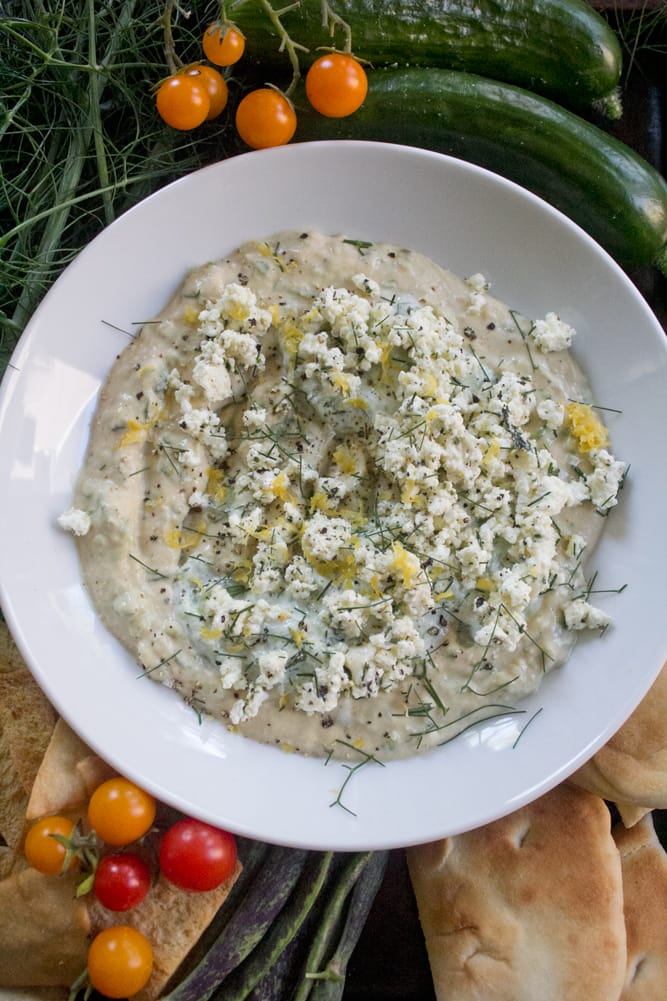
52 Weeks of Hummus //Healthy //Herbs //Potager //Recipes
Tzatziki Hummus with marinated Feta
May 31
3 min read
0 Comments
A Cool Take on Two Summer Favorites
Inspired the flavors of the Mediterranean, Tzatziki hummus takes the classic flavors of my favorite cooling cucumber dip and pairs it with delightful marinated feta crumbles. This is a great recipe to help use up the bounty of summer cucumbers using traditional flavors combined for something fun to enjoy under the sun.
The Modern Potager Kitchen Garden
The joy of the modern potager is getting to expand your culinary skills and make restaurant-quality meals at home. Picking fresh ingredients from the garden and turning them into something that awakens your tastebuds and thrills is really what life is all about.
It should come as no surprise that I have a high appreciation of historical foods as an heirloom gardener. One of the oldest and most historically relevant dishes in human history is hummus.
And I could eat hummus morning, noon, and night. On its own with fresh flatbreads, alongside eggs, or loaded with roasted veggies. It’s this love of hummus that led Matthew to adamantly state, “You cannot survive on hummus and cucumbers alone.” As we shared a plate of one of my favorite variations, roasted red pepper hummus, with radishes, cucumbers, and herbs from the showcase garden, the challenge of his statement kept dancing in my mind.
While it made me laugh in the moment, the notion that I could not survive off such a healthy dietary staple sent me down a path of cultural exploration and adventures in the kitchen for weeks on end. I wanted to understand the lore surrounding hummus and its impact upon the world. And truth be told, I wanted to discover if one could survive on hummus without getting bored.
In short, I’ve accepted the challenge to explore all that hummus has to offer in both traditional and new ways with the help of some fantastic local chefs, food bloggers, and a little creativity. Together, we’ll make a year’s worth of delicious hummus variations—52 recipes that feature the best of seasonal produce and pantry essentials.
We’ll test various cooking techniques, discussing the pros and cons of each method to achieve multiple results. While some chefs swear by using dried chickpeas and removing the skins, today’s high-powered blenders make quick work of tinned beans with their skins intact.


THE HISTORY OF HUMMUS
The earliest known origins of hummus date back to the 13th century, with several cultures claiming the creation of the savory dip. Yotam Ottolenghi, chef and cookbook author, writes about the hummus wars in his book “Jerusalem: A Cookbook.” But Israel isn’t the only country where people argue over the best hummus recipe. Palestinians, Egyptian Arabs, Greeks, and other Middle Eastern and Mediterranean countries also declare hummus as their dish, each region adding its own nuances.
The essence of the classic hummus recipe are chickpeas, tahini, lemon juice, and salt. As cooking methods have changed over the centuries, the textural preferences and techniques used to create the creamiest dip have altered the base recipes.
HISTORY OF CUCUMBERS
Cucumbers originated in early Indian civilizations, growing wild at the base of the Himalayas. Indians began cultivating the fruit and it spread in popularity across the Roman empire.
However, history has not favored the cucumber. After the fall of Rome, the refreshing and crunchy fruits didn’t reappear until the 8th century and did so with minimal fanfare. Explorers brought cucumbers with them across the Atlantic and during 16th century, European trappers in North America introduced the native Indians in the region of Great Plains and the Rocky Mountains to cucumbers.


Tzatziki Hummus with Marinated Feta
Makes approximately 1 1/2 cups of fresh hummus | 4 servings
Inspired by my favorite flavors of the summer season and years of enjoying hummus
Ingredients
Tzatziki Sauce
2 teaspoons lemon zest
1 teaspoons dill or fennel fronds
1/3 cup of Greek plain yogurt, strained
2 small Persian cucumbers, grated with skins + strained (makes about 1/4 cup after draining)
1/4 teaspoon grated garlic
1 teaspoon olive oil
salt + pepper, to taste
Marinated Feta Crumbles
1/2 block of feta, crumbled with a fork
1 tablespoon garlic marinated extra-virgin olive oil (you can use unseasoned olive oil too)
1 teaspoon lemon zest
1/2 teaspoon thyme and/or marjoram
1/2 teaspoon dried mint, optional
1 teaspoon parsley, finely chopped
1/2 tablespoon dill or fennel fronds, finely chopped
Sea salt and freshly ground black pepper
1/2 teaspoon chili flakes, optional
Cucumber Hummus
1 1/2 cups hydrated + cooked chickpeas (garbanzo) beans, reserve bean liquid for blending hummus (or one can of chickpeas)
2 tablespoons tahini (sesame paste)
2 tablespoon lemon juice
4 cloves garlic confit
3 medium Persian cucumbers, grated with skins (makes about 2/3 cup shredded cucumber)
1/2 teaspoon freshly cracked pepper
Pinch of sea salt
Glug of really good extra virgin olive oil
For garnish
Marinated feta crumbles
Lemon zest
Tzatziki
Salt + pepper
Fresh herbs – parsley, thyme, dill, fennel fronds, or marjoram
1) Shred the cucumbers for Tzatziki and the hummus and place in a strainer. Press with the back of a spoon to press out extra water. Press until mostly dry and set aside.
2) Crumble half a block of feta and marinate with olive oil, herbs, and salt and pepper. Set aside.
3) Drain the chickpeas; reserving the liquid. In a high-powered blender, add chickpeas, tahini, lemon juice, ground pepper, and a small pinch of sea salt. Blend at high speed until smooth, scraping down the sides if needed. If the mixture is not blending well, add 1-2 teaspoons of bean liquid or water to help thin. Add one circle of olive oil (about 2 teaspoons) and blend again. Once hummus texture is to your liking, gently fold in the grated cucumber.
4) Place hummus in a shallow bowl. Garnish with tzatziki and feta crumbles. Drizzle with olive oil and fresh pepper and flaky salt for extra visual appeal.
Serve the hummus with warm flatbreads, crispy pita chips, cucumbers, cherry tomatoes or radishes. Excellent as a hearty lunch or served alongside gyros and summer orzo salad.

Leave A Comment